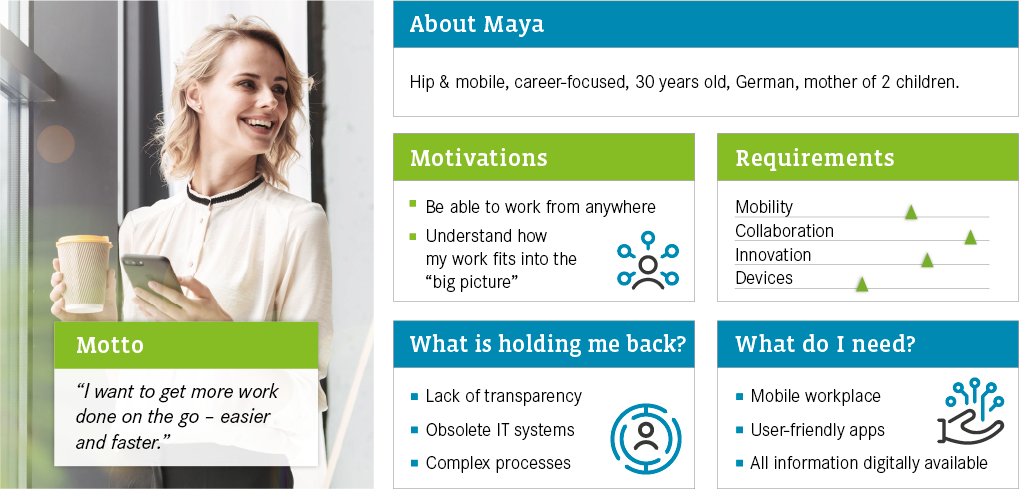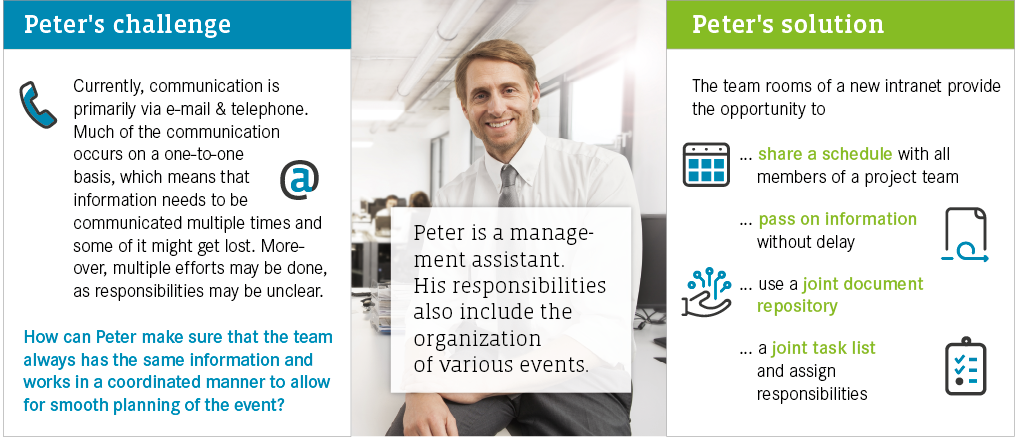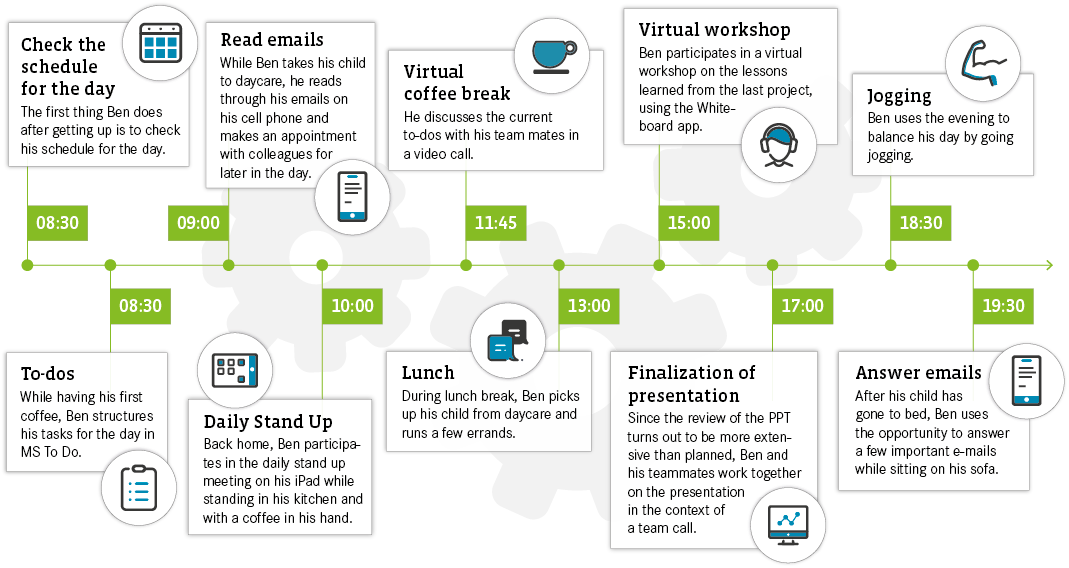The world of work has changed, and remote working models have long become the new normal. At the same time, companies must not lose sight of their workforce. To succeed, they need to understand their workforce as a link in the value chain that needs to be placed at the center of entrepreneurial activities. This is best accomplished by developing employee personas, use cases, and “A Day in the Life of ...” examples.
Ever since the Covid-19 pandemic started, if not before, hybrid working models including home office and remote work have become a necessary element of everyday life. Organizations will have to quickly adjust to this new normal—and provide guidance to their employees along the way. The 2021 Future Organization Report recently found that the success of an organization depends on their employees—and their agility in adjusting to digital processes.
Many employees, however, are overwhelmed by the dynamic innovations of the digital collaboration process. And their companies often do not yet have adequate solutions in place—an additional demotivator. In order to satisfy their workforce—and thus their customers—organizations need to identify what their personnels’ needs are in the context of the new normal. Now is the time to gain an understanding of how employees are working and how they would like to be working.
Understanding real employees using fictitious personas
A potential approach is to develop personas. Personas are descriptions of fictitious people who are representative of a specific group of employees, based on their specific needs, skills and goals. The description takes into account demographic data as well as individual needs.
Personas can be designed as simple or elaborate models, as needed, and they always portray stereotypical characteristics. Universal patterns are described with respect to employees' goals, motivators, expectations, and behaviors. In an increasingly digitalized virtual work environment, personas can be particularly useful to provide employees with dedicated tools and support them on their personal change journey.

Use cases—challenges and a path for solution
Organizations can leverage use cases to communicate helpful information and approaches to solutions in an understandable and appealing manner. The use cases describe employee-oriented solutions to specific challenges in their everyday work. A use case focuses on solving a specific problem of a staff member and answering his/her question: What is in it for me? It describes the challenge from the persona's point of view. Based on this description, it proposes a solution to the described problem and takes the user on a step by step journey.
By using this approach, organizations ensure that their employees are at the center of what they do. After all, the identified solution provides tangible added value for the employees and not just for the company. This results in increased satisfaction and a more positive work attitude, promoting a more efficient way of working. The changes in our everyday working lives, brought about by the new normal, make it necessary to develop use cases that take into account the new requirements in the home office context.

Looking at the big picture: “A Day in the Life of …”
New approaches to solutions can be clarified by taking a holistic view and looking at an exemplary work day of an employee. "A Day in the Life of ..." can be used to show typical activities and describe what working in the new normal looks like. Generally, the day is presented in a chronological order of different use cases. The visualization presents the challenges of digital working in an understandable manner and puts them into context. As a result, the company will see immediately implementable solutions for their employees' day-to-day work.


